HIIT Conditioning: Planning Strategies – Part 2
This is the last part of the HIIT Conditioning article series.
In the first part of the Planning Strategies, among other topics, I mostly focused on introduction to the Planning Strategies, Heuristics and Uncertainty, as well as the three types of analysis.
In this second and the last part, I will give a few concrete examples for “what should be done”. I will break the rule of not doing too much long term planning in the following examples.
Imagine we have three slots for HIIT in a week and we need to figure out what should be done. Here are a few planning strategies.
Strategy #1 (Sequential or Uni-Directional Planning)
The simplest planning strategy would be do devise few weeks (sprints) to a single bucket (in this case HIIT type):
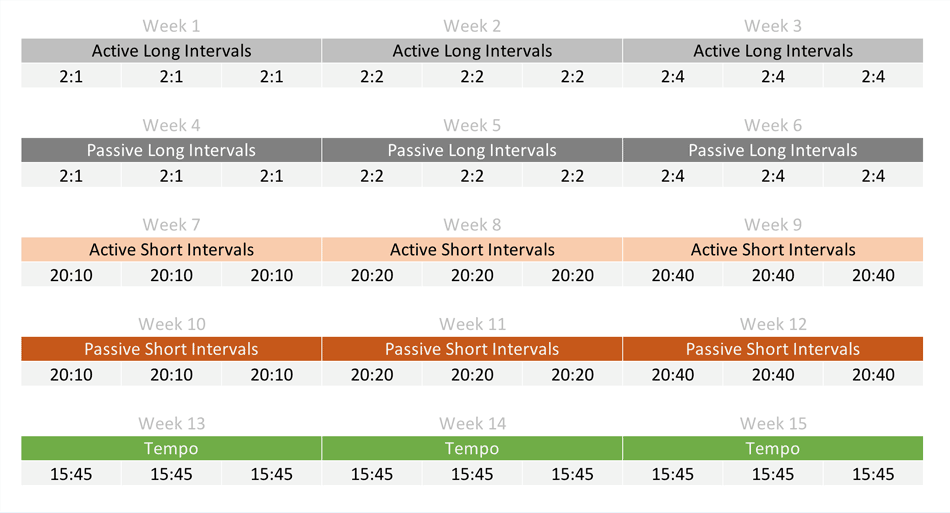
This is a fine strategy for someone who has ample of time to prepare, or who is just starting up. It is problematic for someone who is already in shape and needs to perform as soon as possible (for example in soccer, you might have 5-6 weeks to prepare, probably only a week or two until first friendly game). It also breaks 1/N rule and assumes a lot of predictability and sequentiality. Thus, not very robust strategy.
One thing to keep in mind is – what is the time frame over which 1/N heuristic should be applied? It is hard to give a precise answer, since it could be one week, one sprint, or one release phase. As well, does N correspond to all HIIT variations or only to the gross categories (long intervals, short intervals, tempo, SIT, RST)? It is hard to give concrete and exact answer, because there is none. But, as alluded before, N should be the highest resolution categories that are functionally significant. In plain English, that would be gross HIIT categories.
You probably noticed that the weeks in a given phase progressed from extensive, to normal, to intensive variations, while being of the same duration. You can vary this within a week as well:

In the variation above, you vary duration within a bucket. You can also vary the type (extensive, intensive, and normal). Plenty of options.
There is a slight improvement of this strategy, utilizing funnel periodization:
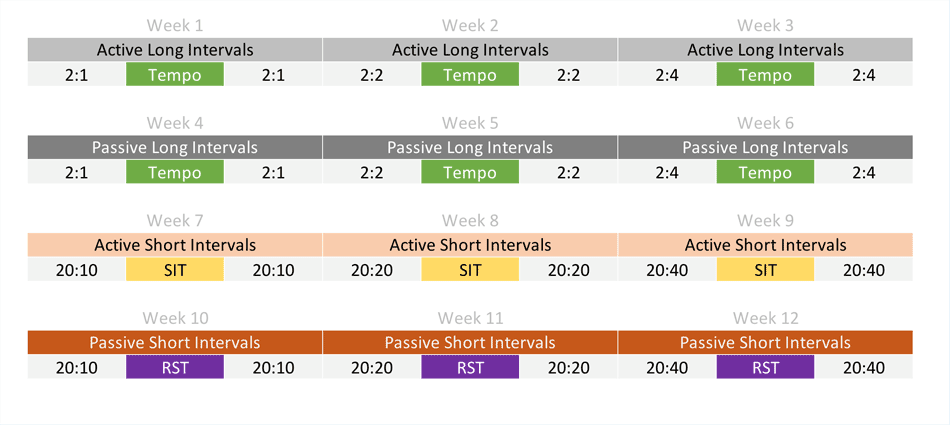
Using a funnel, you attack adaptation from two sides (slow speed and high speed) and they slowly converge. This is quite common in endurance sports, but hard to apply to a letter in team sports, since there is not a single distance/duration to be trained for. In team sports, the solution might be to inject faster HIIT variation in the phases of slower HIIT emphasis and vice versa. In a way, to cover both aspects and move towards 1/N heuristic. This strategy is quite useful in HIIT planning.
Potential solution that approaches 1/N heuristic would be to shorten the emphasis phases:
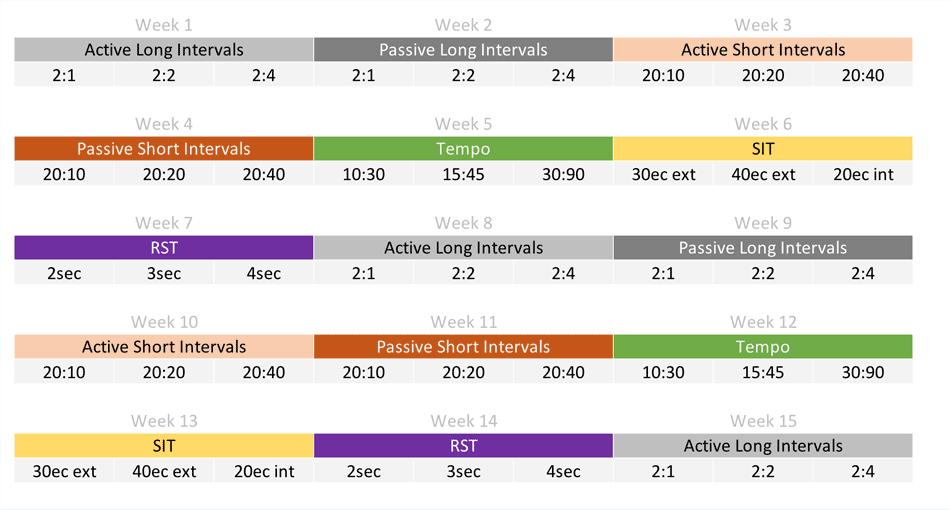
In my opinion, this strategy is much better and it can also utilize various variations within buckets – different durations of HIIT drills, or different type (extensive, normal, intensive). The order of the phases might be different, and in this example, linear increase in HIIT intensity is utilized. Nothing magical regarding following a certain scheme, as I have explained previously.
One potential issue with the strategy above (less with funnel variation) is the switch from emphasis phases (especially when they are long), which can cause stress related issues. In the same vein, what happens after the whole cycle ends? Is it just repeated of something else is being performed?
Strategy #2 (Mixed or Parallel)
The strategy #2 is a true 1/N approach. Every training is of a different HIIT type:
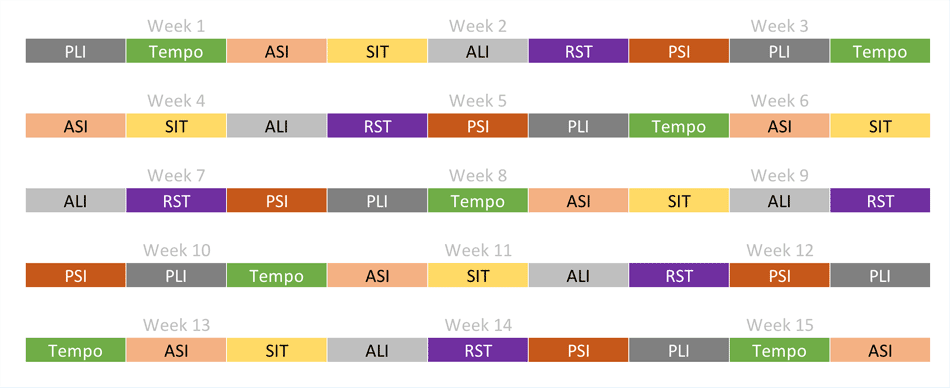
With this strategy, we have achieved the shortest time of the cycle, or in other words, how long does it take to repeat all the HIIT variations. In other words, this is closest to 1/N heuristic, which makes it the most robust strategy, but it might lack saturation for a given HIIT quality (whatever that might be) to be stimulated. It also might be too jumpy, especially at the beginning of preparation, in which athletes need more time to get receptive for more strenuous HIIT variations, or they might not be needed in the first place (using the principle of minimum stress for maximum benefit, for example, in recreational athletes).
The solution would be to employ barbell strategy and utilize emphasis phases, as well as 1/N as much as possible.
Strategy #3 (Combinations)
There could be numerous combinations that fit with the barbell strategy. As mentioned, funnel approach (or doing some higher intensity HIIT in slow intensity HIIT emphasized block and vice versa) fits here, and it is a viable strategy that helps with not being removed too long from all the bases (in other words 1/N heuristic).
Two other options might involve the following:
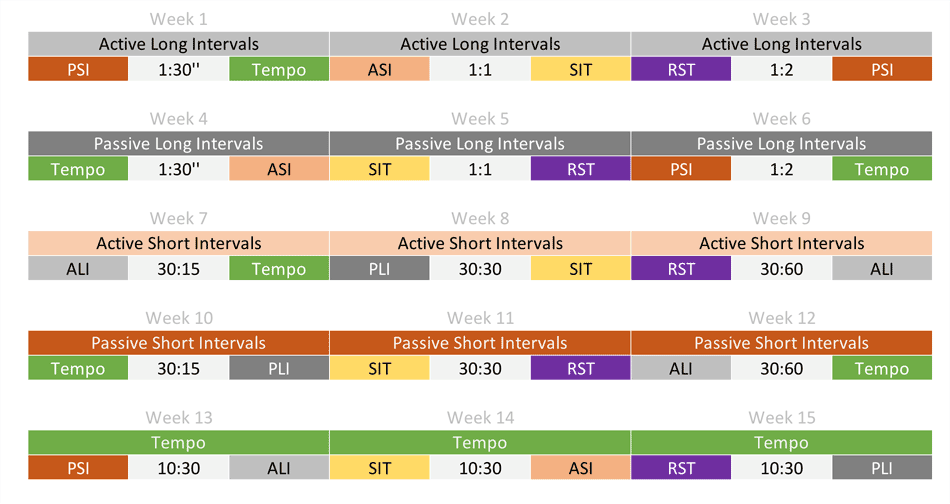
In this approach, only one emphasis workout is performed. This way the emphasis is lower, but 1/N heuristic is being followed more. The next solution reduces the 1/N heuristic, but increases saturation (emphasis) of a given HIIT method:
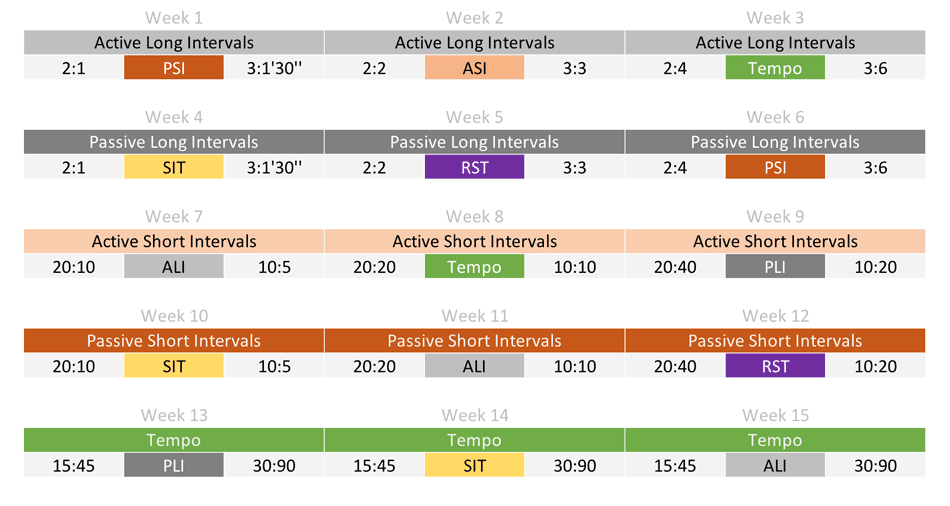
The above variations involve longer emphasis phases, but this could be implemented in shorter version as well:











Responses